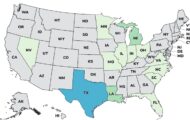On February 16, 2012, the FDA released more information about its program of holding and testing imported orange juice for carbendazim, a fungicide. On that same day, the agency responded to a request submitted by the Brazilian Citrus Exporters Association (Citrus BR) for “enforcement discretion.”
In January, the government began holding and testing orange juice after Coca Cola stated they found carbendazim in products made from oranges imported from Brazil. The fungicide is legal to use in Brazil and other countries, but is illegal to use on oranges in the United States, which is why even tiny amounts are considered problematic.
There is no maximum level set for carbendazim in orange juice in this country, although trace amounts are allowed in some foods. The European Union has set a maximum level of 200 ppb. The Environmental Protection Agency sets the “safe level” for the fungicide at 80 ppb. For the purposes of the current testing, the FDA is destroying juice or juice products with carbendazim at a level higher than 10 ppb.
Information about the shipments:
- Samples from 104 shipments have been tested
- Twenty-four shipments contained at least 10 parts per billion (ppb) carbendazim.
- Half of those shipments came from Brazil; the other half from Canada, which imports oranges from Brazil to make into concentrate.
- Of the 71 shipments that tested negative for the fungicide, 57 have been released for sale. They came from:
- Argentina (2 shipments)
- Belize (1 shipment)
- Brazil (1 shipment)
- Canada (22 shipments)
- Costa Rica (2 shipments)
- Dominican Republic (3 shipments)
- Honduras (2 shipments)
- Italy (2 shipments)
- Lebanon (1 shipments)
- Mexico (18 shipments)
- Trinidad and Tobago (2 shipments)
- Turkey (1 shipments)
The FDA rejected the “enforcement discretion” request by Citrus BR. The group had asked that levels of carbendazim in orange juice concentrate be assessed at its “single strength” level, or levels that would be present once the concentrate is mixed with water for serving.
Citrus BR had asked that this “single strength” level be used as the test standard through June 2013, according to the FDA’s letter, since orange juice shipments from Brazil “may not be free of carbendazim residues for 18 months.” Citrus BR had pledged to stop using carbendazim at the end of January, 2012.
The Brazilian group cited other cases where the FDA uses the “single strength” level for chemical testing, including lead in prune juice concentrate and patulin in apple juice. The FDA rejected that request because they said that carbendazim is “the direct result of the intentional application of a fungicide resulting in pesticide chemical residues in food for which there is no EPA tolerance or tolerance exemption,” unlike the chemicals in the other beverages, since that contamination results from the presence of the contaminant in the environment.
In the letter, the FDA went on to say that, “By contrast, a food that bears or contains an unsafe pesticide chemical residue is adulterated under Section 402(a)(2)(B) (21 U.S.C. 342(a)(2)(B)).”
The FDA also stated, “Based on all results we have seen to date, we remain confident that orange juice in the U.S. may be consumed without concerns about its safety due to the possible presence of such residues.”




